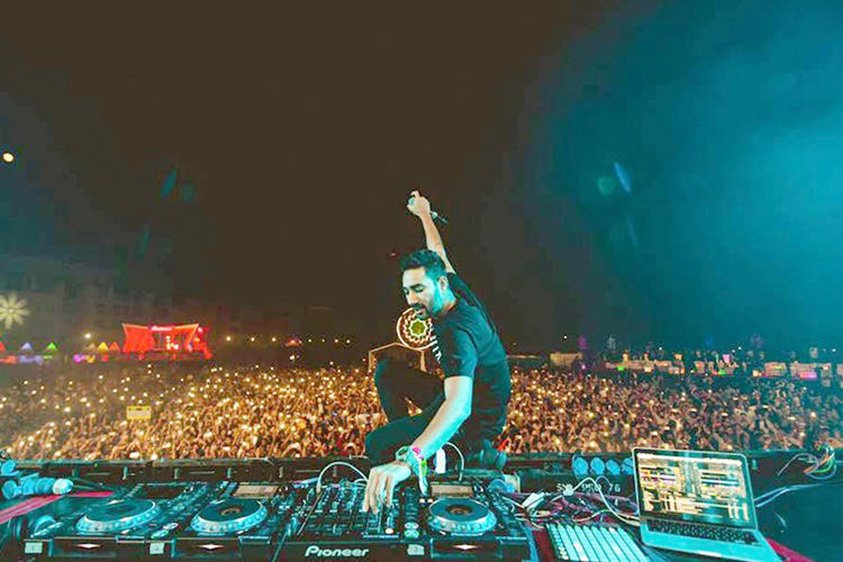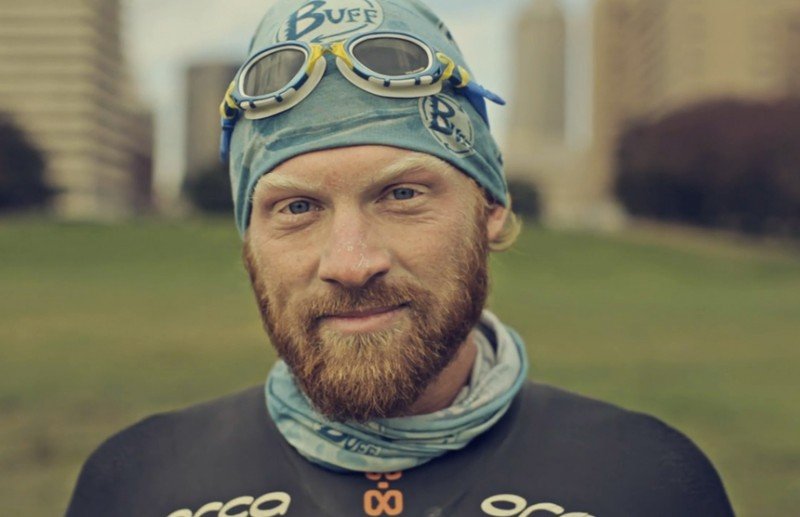India –
Currently a one-man army under the onstage alias ‘Nucleya‘, this is a man who has been a pioneer of the dubstep genre in India. Sailing into the scene in the late ’90s as a co-founder of Bandish Projekt, Udyan Sagar is no stranger to hybrid beats and the bated breath preceding massive bass drops. His tells Emaho more about his experiments with super-synced AV sets, collaborations that transgress language barriers in the pursuit of a good sound and his evident excitement at the future of the rapidly evolving Indian electronica/dubstep scene.
Emaho : Having started off in the 1990s with Bandish Projekt, you have actually evolved with the electro-house/dubstep scene in India. Tell us a little bit about your own musical journey. Would you say that occurrences in your personal life change the way you look at or perceive music?
Right from the beginning, I liked to experiment with different genres. For me music is music. I don’t have any constraints of making music in one particular genre, and that gives me lot more creative space to explore. My music is now a bit more melodious as compared to how it was 5 to 7 yrs back and that is because I started to learn music. There is no end to that learning, so as I learn more, I experiment more. Personally, life has changed drastically. I am married and have a son now. Becoming a father, I feel, calms one down and, perhaps, makes one a bit more emotional. That change has influenced my music in a big way.

© Prateek Biswas
Emaho : Today, you are a one-man army. You are said to have split from Bandish Projekt to ‘work with different styles of music’. Besides the creative freedom (like dabbling in genres like Bollywood and glitch-hop), were there any other reasons that made you go solo?
As a band, sometimes it’s essential to follow a particular style of music because people relate to it and that’s how you get more dedicated fans. I wanted to break away from that and see what else is out there. Apart from the musical differences, we also had some personal differences, which we couldn’t solve. Going solo was the only option I could think of.
Emaho : How did you come up with the onstage alias ‘Nucleya’?
There is no major explanation to be honest. ‘Nucleya’ was my email password when I was in my teens. I don’t even remember how I ever came up with that term! Anyway, that term defines me now.
Emaho : Back in 2008, as one half of Order of the Essence, tell us about the kind of crowd response you received when you first dropped a dubstep-only set at Sunburn.
Dubstep was very new in India at the time and not many people knew about the genre, so there weren’t many who turned up for our show. And yet, all the people who were there were like-minded people. As dubstep grew in India, we got more recognition and success.
Video Courtesy : Nucleya, Youtube
Emaho : Your album Horn OK Please was your personal effort ‘towards a new direction of Bollywood Remix culture’. How do you work around striking a balance between melody and dubstep? What was the kind of response you got?
For me melody is the most important element of songwriting. Melody is the soul of a track. Once I have the melody in place, I work on other things around it. I guess the balance just comes in automatically.
Horn Ok Please was released long ago. I did an 8-city tour across India. Radio Mirchi and Rolling Stone supported the album. The response was mixed though. Even now most of the people prefer the mainstream Bollywood remixes; it was difficult for them to relate to my album. But, as always, there were many people who loved it too.
Emaho : You have worked on countless collaborations over the years. Tell us a few interesting experiences you’ve had during these. Which are your personal favourite accomplishments?
I have recently made a few tracks with Chinna Ponnu, a Tamil singer from Chennai. I didn’t know a word of her language and she didn’t know a word of mine. The language barrier made the work challenging but also a lot of fun. There was great energy flowing in the studio and that is the most important thing I guess. We made some really cool tracks together which I am looking at releasing very soon. Apart from this collaboration, I also made a few tracks with my wife, one of which is called ‘Akkad Bakkad’. People seem to like that track a lot.
Emaho : You’ve performed at several international music festivals like Glastonbury, Edinburgh Fringe Festival, Lille 3000 and the Electron Festival in Switzerland. That must have exposed you to a very different sort of audience. What was the kind of response you received? What are the main differences you see amongst the audiences there and back home?
I have always received a really positive response from international audiences. The difference between the audiences there and back home is not much anymore. Whatever difference there is, is because the EDM scene is not that evolved in India yet. But there is certainly a huge difference from my early years.

© Zacharie Rabehi
Emaho : The independent music scene here has really begun to gain a foothold amongst Indian listeners in the past few years. What is your take on the multitude of independent fests coming up in the country?
It’s amazing? Exactly what we wanted, and this is just the beginning. In future, we hope to have more interesting festivals happening in India.
Emaho : Tell us a little bit about your AV experiments with Pink Soda at the Unbox Festival. She’s also designed a lot of interesting abstract cover art for your work. Coming from two different branches of creativity, how did you convey your concepts to her over the course of your collaboration?
Smriti aka Pinksoda has designed all of my artwork and also my previous band’s – Bandish Projekt. We have grown up together and share similar thoughts about design and art. We met 12 years back and have been married for 5. We understand each other completely and that’s why working together is fairly easy and exciting. She is a design graduate from NID, a very versatile person. She can sing, illustrate, produce music and video mash-ups; it’s always fun to work with her.
Emaho : ‘The New Cultural Mash-Up’ is an ‘experimental, live performance project’ with B.L.O.T. How did you two come up with this fascinating concept?
B.L.O.T. were doing AV sets long back. We both wanted to do super-synced AV sets, which revolved around old Indian ads, films and such like. We sat and experimented a bit and it all worked out really well in the end.
Emaho : You have also produced original soundtracks and background scores for feature films like Dubai Return, short animations, as well as ad films. Are there any OSTs in the pipeline right now? What is your take on producing original scores as opposed to remixes?
I am producing music for Aditya Bhattacharya’s next film called Bombay’s Most Wanted. The film is in its final stage now. It is amazing working with Aditya because he gives one enough time and creative freedom to come up with interesting music. For me, when I produce music for films, interaction with the director is the key.

© Zacharie Rabehi
Emaho : Your music is versatile and keeps evolving constantly. Are there new sounds that you’re looking forward to experimenting with in the future? What other creative pursuits are you currently involved in?
Right now, I am trying to experiment with Indian street music, especially south Indian street music. That’s where my heart is.
Besides my music production work, I’m working on this original idea for a virtual musical instrument. Also, my own audio video sets for which I will be making more videos with Pinksoda.
Art & Culture Interviewed by Aditi
Feature Image © Zacharie Rabehi















